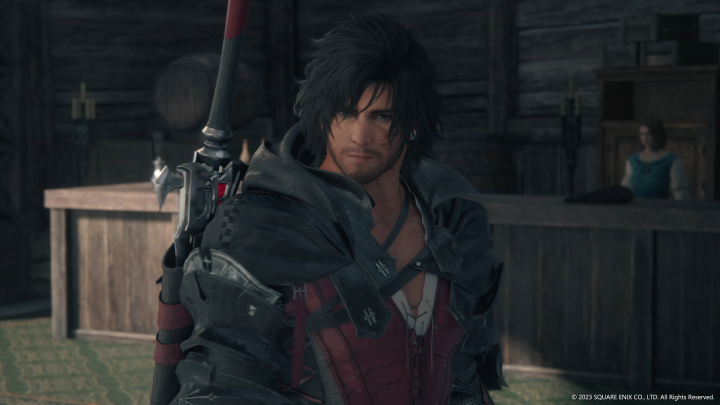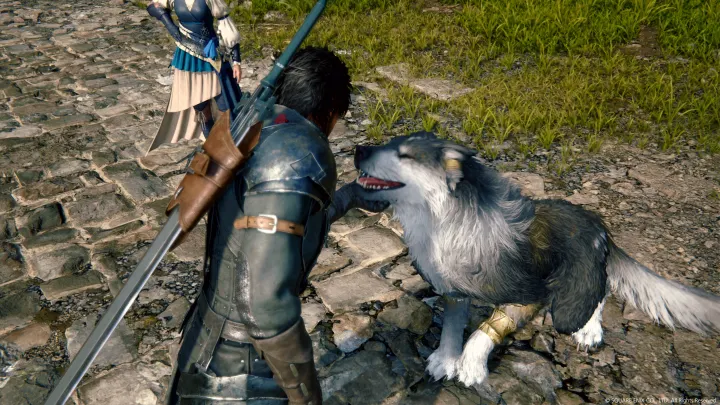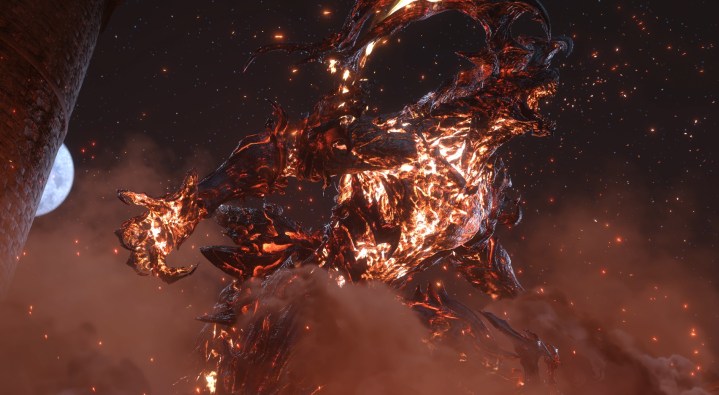
If you held a March Madness-style tournament to determine the Final Fantasy hero with the most emotional baggage, I’d imagine that Final Fantasy XVI’s Clive Rosfield would at least make his way to the semi-finals. The tortured hero goes through one hell of an ordeal in the action RPG’s dark intro. First, his little brother that he’s sworn to protect gets brutally murdered by Ifrit after a climactic Eikon battle. To add insult to that injury, Clive has his life spared by a rival nation in Valisthea and is forced to serve in their military against his will.
Tough break, kid.
Though Final Fantasy XVI features a large ensemble of characters, it’s very much Clive’s story told through three eras of his life. That setup would present Square Enix’s Creative Business Unit III with a unique opportunity to paint a larger, more complete image of who Clive is rather than focusing on one story within his life. That gives Final Fantasy 16 a much grander story than what was teased in its demo, but how do you keep a story that sprawling still centered around a relatable hero?
Ahead of the game’s recent launch, I spoke with Creative Director Kazutoyo Maehiro and Combat Director Ryota Suzuki about the creative ideation that brought Clive Rosfield to life. For the team, the trick was making sure Clive was never pigeonholed into a quest for revenge. Instead, his story was built with growth in mind, instead drawing players’ attention to where he fits into the world around him and how he leaves an impact on those events.
Keeping Clive relatable
When initially sitting down to create Final Fantasy 16, the team wanted to make sure to build a hero that players could connect with amid a larger-than-life story. The team would adopt a design philosophy early on where they made sure Clive wouldn’t do or say anything they believed the player themselves wouldn’t do. From there, it was about finding a multifaceted, grounded story arc within a rather sprawling epic.
Despite featuring enormous kaiju battles, Final Fantasy 16 starts off on a painfully intimate note. Its opening three hours play like a self-contained film, introducing Clive as a bright-eyed teen tasked with protecting his brother Joshua, the keeper of the Phoenix. It’s an intro that quickly won players over in a demo, but it doesn’t actually set up the true scope of Clive’s arc. In fact, Kazutoyo Maehiro describes it as more of a tutorial narrative.
“With Final Fantasy XVI being an action game for a group of fans that maybe are not used to action games, the beginning of the game is about learning to play it,” Maehiro tells Digital Trends. “So we wanted to focus on something simple for that intro and why we decided to focus on Clive’s revenge story. You learn about his past, but ultimately Final Fantasy XVI is about Clive learning who he is and learning to accept who he is.”

That journey is reflected in a surprising three-act structure that goes in directions that fans might not be expecting. The revenge story is only the focus for the first eight hours or so of the game before Clive makes a startling revelation about himself that leads into a much broader story where we flash forward to Clive in his 30s.
“We start off with that revenge theme in the early part of the game,” Maehiro says. “You can split that into two parts. There’s act one where you’re learning why he wants revenge and then act two where he’s actually going out to get his revenge. In act two, he learns a little bit more about who he is thanks to the help of Cid and then that story transforms from that revenge to the true story about who he is in act three.”
At first, it feels a bit like a bait-and-switch. That revenge tale gives players a very personal insight into a complicated world run by mothercrystals and titanic Eikons. Act three, by comparison, feels much broader as players learn the intricacies of Valisthea’s inner politics. For the team, that isn’t a diversion away from the story; rather, it’s the moment where the true focus becomes clear.
“Clive is always going to be the centerpiece of the story,” Maehiro says. “When you see the rest of the world, we wanted to show how he was affecting the rest of it. We didn’t want this to be a story where all this other stuff was happening in the world and then Clive’s in that. We wanted it to be that Clive is in the world and through his actions, this is how the world is changing.”
It’s that tidbit that helped me understand what Creative Business Unit III was going for in its complex structure. This isn’t just a tale of a character trying to outrun their past, but rather the story of someone trying to find their place in the present. Just as we see the tragic role Clive plays in his brother’s death, we also get to see the positive change he’s able to bring to Valisthea in aiding a fight against tyranny. A revenge story becomes a redemption arc about a man desperate to move on from a blind bloodlust that initially defined two decades of his life.
Building Ifrit
To get across that character growth, the team would need to do more than simply inundate players with long exposition dumps. The devil would be in the details, with everything down to his animations playing a role. Ryota Suzuki explains how he designed the game’s combat system with that arc in mind, subtly making Clive a more skilled fighter the more comes into his own.
“Clive is skilled with the blade but he’s also received the blessing of the Phoenix from his brother, so you have swordplay and the image of fire,” Suzuki tells Digital Trends. “Taking that and creating actions that represented both of those was the starting point. Clive’s supposed to be stylish when he’s fighting, but you need to have that representation of the Phoenix in there too. When he’s in his teens, he’s great with his sword but he’s still in his teens. He hasn’t mastered the sword yet. So we wanted to see that growth in his movement. So the animation we have for him doing one move in his teens is actually different than what we have in his 20s. It’s a little more fluid. You’re going to see the progress of Clive becoming a better swordsman in his animation.”
I had a lot of influence from ancient Greek mythology.
Getting Clive’s nuances right would be crucial, but it would only be half of the team’s work. During Eikon fights, the hero takes on the form of one of Final Fantasy’s most iconic characters: Ifrit. That decision isn’t a random one; there’s a thematically relevant reason that the team went with the fire kaiju instead of a character like Bahamut.
“When deciding the original concept for the game, we decided that we wanted the hero to be represented by Ifrit,” Maehiro says. “In Final Fantasy 16, I had a lot of influence from ancient Greek mythology. In ancient Greek, you have philosophers who think that the source of all creation is fire, so there’s that connection. We also knew that this was a story about brothers. So with Ifrit, you also have Phoenix as a symbol of creation and fire. So that’s how we tied them together.”

Despite the fact that Ifrit is a towering monster, the team still wanted to make sure players could still feel he was connected to Clive. To accomplish that Suzuki made sure to mirror Clive’s basic moveset during Ifrit battles, keeping a bit of the man inside the monster.
“When creating Ifrit’s actions, we wanted them to mirror Clive’s actions so that all the player’s know-how playing as Clive would carry over into those battles,” Suzuki says. “When you look at Ifrit’s moves, he has that basic attack and that lunge. These things that Clive can do, Ifrit can do. But on top of that, we want to have something that feels original to Ifrit as well. So it’s a combination of these moves that feel very much like Clive mixed with these things he can’t do that feel very Ifrit.”
All of those nuances go a long way toward making Clive a multidimensional hero who stands tall with some of Final Fantasy’s best. We meet him at his lowest point, but we get to see him grow and move past that trauma throughout his long journey and it’s one of the story’s greatest pleasures. He may be a towering monster, but he’s one of the series’ most human characters yet.
Final Fantasy XVI is out now on PS5.



